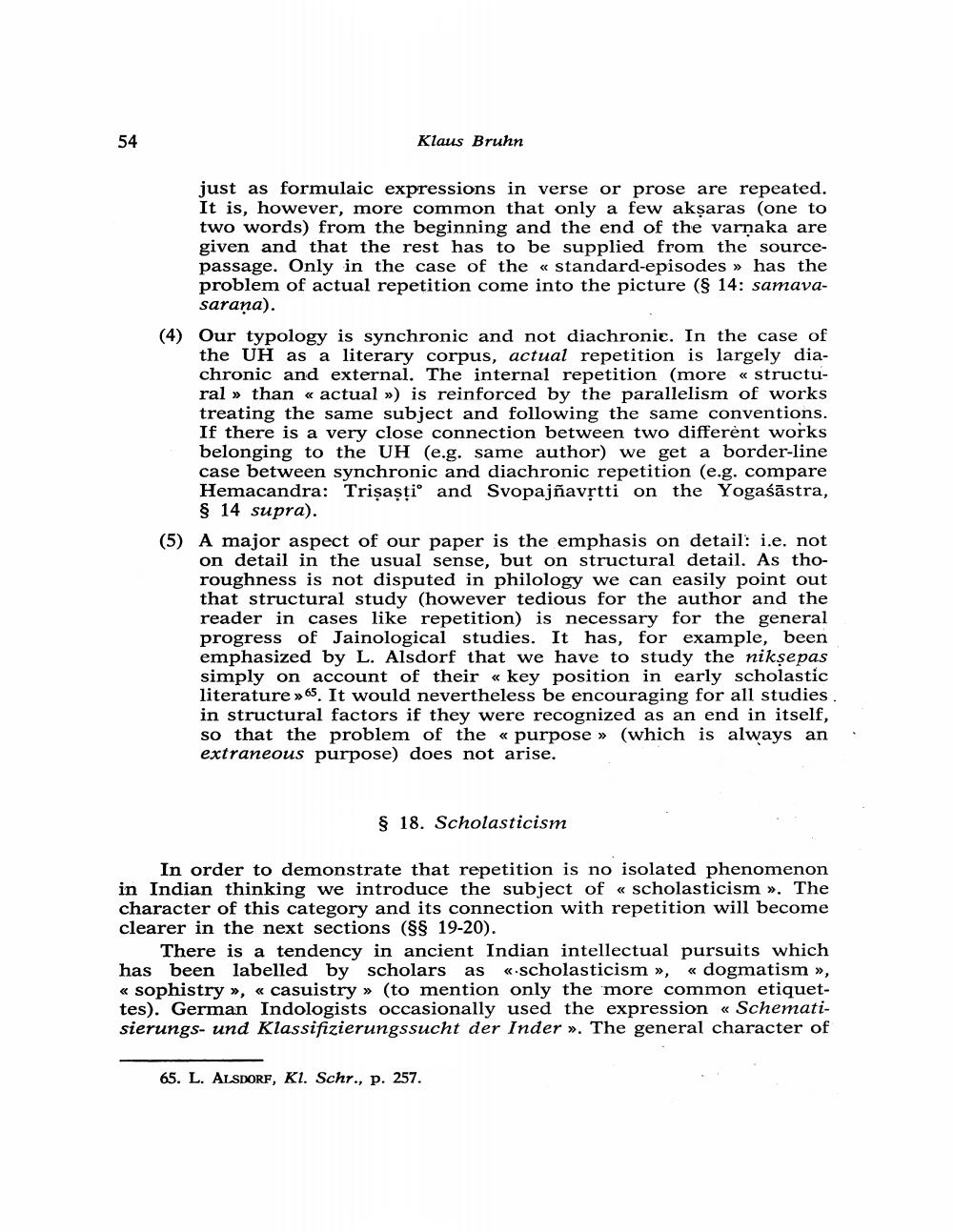________________
54
Klaus Bruhn
just as formulaic expressions in verse or prose are repeated. It is, however, more common that only a few akṣaras (one to two words) from the beginning and the end of the varṇaka are given and that the rest has to be supplied from the sourcepassage. Only in the case of the << standard-episodes » has the problem of actual repetition come into the picture (§ 14: samavasarana).
(4) Our typology is synchronic and not diachronie. In the case of the UH as a literary corpus, actual repetition is largely diachronic and external. The internal repetition (more << structural » than << actual ») is reinforced by the parallelism of works treating the same subject and following the same conventions. If there is a very close connection between two different works belonging to the UH (e.g. same author) we get a border-line case between synchronic and diachronic repetition (e.g. compare Hemacandra: Triṣaști and Svopajñavṛtti on the Yogaśāstra, § 14 supra).
(5) A major aspect of our paper is the emphasis on detail: i.e. not on detail in the usual sense, but on structural detail. As thoroughness is not disputed in philology we can easily point out that structural study (however tedious for the author and the reader in cases like repetition) is necessary for the general progress of Jainological studies. It has, for example, been emphasized by L. Alsdorf that we have to study the nikṣepas simply on account of their « key position in early scholastic literature >>65. It would nevertheless be encouraging for all studies. in structural factors if they were recognized as an end in itself, so that the problem of the « purpose » (which is always an extraneous purpose) does not arise.
§ 18. Scholasticism
In order to demonstrate that repetition is no isolated phenomenon in Indian thinking we introduce the subject of « scholasticism ». The character of this category and its connection with repetition will become clearer in the next sections (§§ 19-20).
There is a tendency in ancient Indian intellectual pursuits which has been labelled by scholars as «.scholasticism », « dogmatism »>, << sophistry », « casuistry » (to mention only the more common etiquettes). German Indologists occasionally used the expression « Schematisierungs- und Klassifizierungssucht der Inder ». The general character of
65. L. ALSDORF, Kl. Schr., p. 257.




